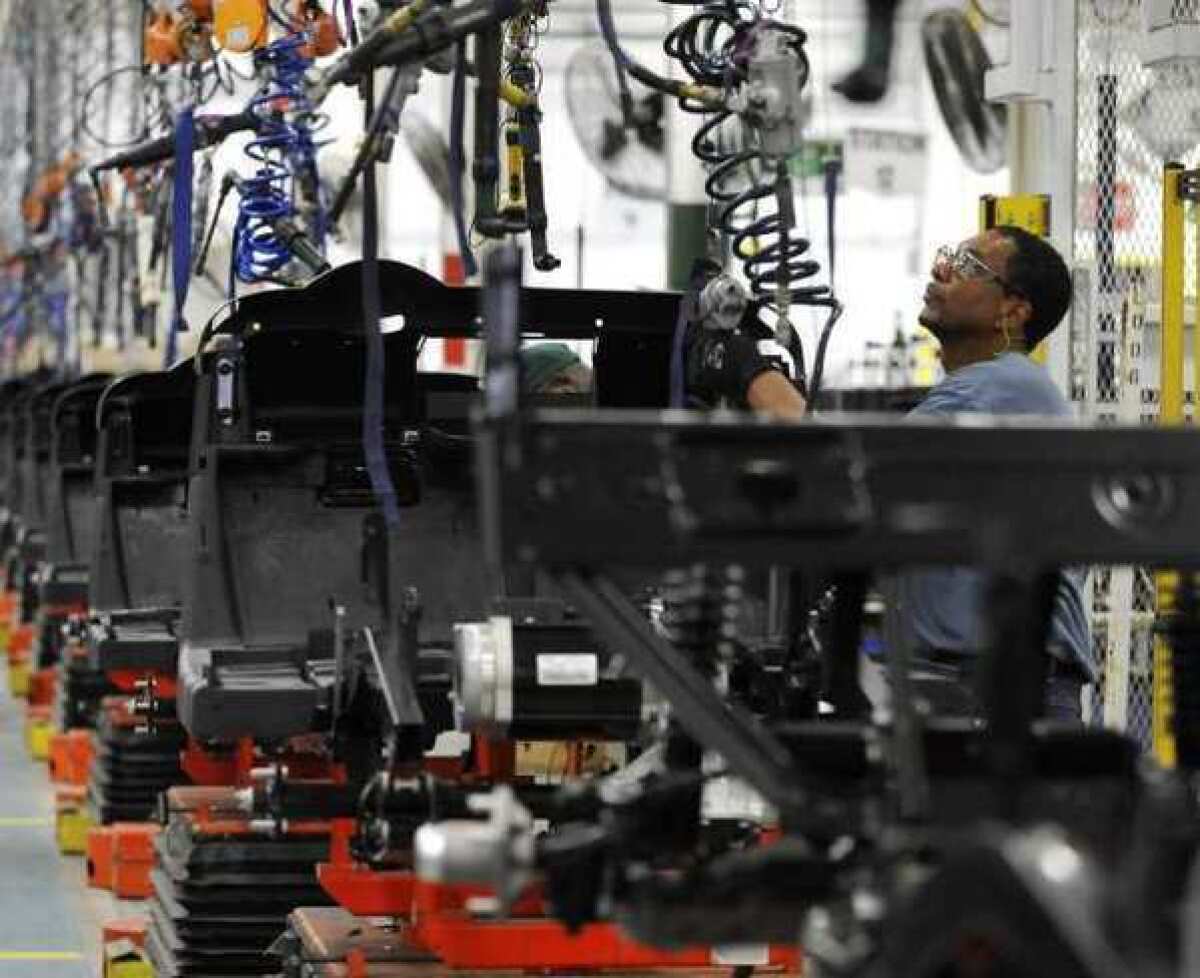Construction spending falls; factory activity at 3-year low

Construction spending in July suffered its deepest slump in a year, tumbling 0.9% from June after four straight months of gains, though outlays for new single-family homes improved.
The value of building projects nationwide slipped to a seasonally adjusted annual rate of $834.4 billion last month â half of what experts consider healthy and a reversal of Juneâs 0.4% boost, according to the Commerce Department.
Compared to July 2011, however, the gauge is up 9.3%.
Last month, private spending on construction dipped 1.2% from June to $558.7 billion. Spending on residential projects dropped 1.6%, though the new single-family housing sector enjoyed a 1.5% increase.
Outlays for private commercial buildings tanked 1.8%; spending on factory construction took a 2.2% nosedive. Work on religious structures, however, resulted in a 1.2% boost in spending.
The value of public construction fell 0.4% to $276.7 billion.
A separate report showing shrinking factory activity compounded concerns from the construction data.
An index measuring manufacturing movement calculated by the Institute for Supply Management registered at 49.6 in August, down 0.2 percentage points from July and the lowest reading since July 2009. The measure has declined for three straight months.
Any reading below 50 represents contraction in the sector. New orders dipped to a 47.1 level from 48 in July.
But before any dire predictions of imminent economic ruin, analysts from Credit Suisse note that the 49.6 index level âdoesnât raise a recession flag by itself.â
âReadings in the 42-43 range are more reliable warning signals for the end of a business cycle expansion,â wrote Economics Director Jonathan Basile in a note.
ALSO:
Pending home sales rise in July
Home prices jump in 20 major U.S. cities
Consumer confidence up in August to three-month high, survey says
California employers add 25,200 jobs; unemployment stays at 10.7%
Follow Tiffany Hsu on Twitter and Google+
More to Read
Inside the business of entertainment
The Wide Shot brings you news, analysis and insights on everything from streaming wars to production â and what it all means for the future.
You may occasionally receive promotional content from the Los Angeles Times.











